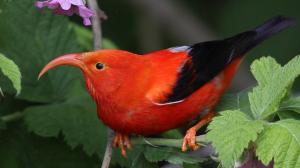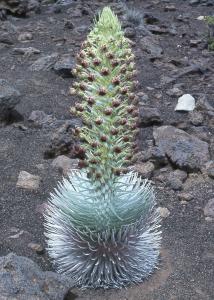Biodiversity of islands in peril, scientists warn
University of Hawaiʻi at MānoaLink to video and sound (details below): https://bit.ly/3ARwVME
Scientists are sounding the alarm. The biodiversity of islands around the world is becoming increasingly threatened, due in large part to habitat loss, overexploitation, invasive species and climate change. If healthy island environments are to be conserved and restored, immediate action is needed by everyone, from policymakers to the general population. These findings and recommendations are in “Scientists’ warning–The outstanding biodiversity of islands is in peril,” published in Global Ecology and Conservation in September 2021 and co-authored by a University of Hawaiʻi at Mānoa professor.
Islands contribute only 6.7% of the world’s land surface area, but they harbor roughly 20% of the Earth’s biodiversity, 50% of the world’s threatened species and 75% of the known extinctions.
“Sadly, humans have had huge impacts on islands,” said School of Life Sciences Professor Donald Drake. “In the last 500 years, three-quarters of the species that have gone extinct are island species, and the reason this is a warning paper is that about half of the world’s endangered species are also island species.”
Drake said we all have a responsibility to help protect the world’s threatened species from becoming extinct, including here in Hawaiʻi, which is home to hundreds of threatened and endangered plants and animals.
Some of the most recognizable species in the state include Hawaiʻi’s state bird, nēnē (Branta sandvicensis); Hawaiʻi’s state flower, maʻo hau hele (Hibiscus brackenridgei); and the Haleakalā silversword, or ʻāhinahina (Argyroxiphium sandwicense macrocephalum).
“The Hawaiian Islands are among the world’s most renowned for biodiversity. They are famous for the unique species of plants and animals that are found only here,” Drake said. “Just as on other islands around the world, we have this amazing biodiversity but it has come under threat from all sorts of human activities and so we’ve had a lot of species here go extinct, but we also have a huge number of species that are endangered that we can still pull back from extinction.”
Public’s help to save Hawaiʻi’s biodiversity
Drake noted that participation from the public can help to turn the tide.
“It’s actually surprising how many opportunities there are in the state to do work to conserve and restore native biodiversity. There are projects of just about every scale in just about every kind of habitat all across all of the islands. There are opportunities available to people of any age and any ability. There’s way more work to be done than there are people to do it,” Drake said.
Some examples of conservation programs, Drake said, include UH Mānoa’s Lyon Arboretum, the Mānoa Cliffs Restoration Project, Hawaii Audubon Society, and other community and school groups.
Research started at UH
The paper is authored by members of the board of the Society of Island Biology, a relatively new scientific society that has grown out of a series of conferences on different islands around the world, the first of which was hosted by UH Mānoa in 2014.
“The research and educational capacity of UH Mānoa places the university in a position to play a leading role in the conservation of Hawaiʻi’s biodiversity,” Drake said.
VIDEO BROLL: (0:42)
0:00-0:05 - The ʻiʻiwi (Drepanis coccinea) is one of the most striking of the Hawaiian honeycreepers, all of which exist only in Hawaiʻi. (Photo credit: Jack Jeffrey Photography)
0:06-0:11 - This yellow-faced bee (Hylaeus mamo), found in an Oʻahu forest, is the only known individual of its species. (Photo credit: Karl Magnacca)
0:12-0:17 - The Hawaiʻi state bird, nēnē (Branta sandvicensis), is the world’s rarest goose; it was saved from extinction through captive breeding, and subsequently reintroduced to the wild. (Photo credit: UH)
0:18-0:23 - The iconic Haleakalā silversword, or ʻāhinahina (Argyroxiphium sandwicense macrocephalum), is a threatened species found only on east Maui. (Photo credit: UH)
0:24-0:29 - There are more than 75 species of hāhā, many of which are extinct. This one (Cyanea crispa) is represented by fewer than 50 remaining plants in the wild. (Photo credit: UH)
0:30-0:35 - The Hawaiʻi state flower, maʻo hau hele (Hibiscus brackenridgei), belongs to an endangered species. (Photo credit: UH)
0:36-0:42 - Carelia turricula is a member of an extinct family of snails known only from Hawaiʻi. (Photo credit: Rob Cowie)
SOUNDBITES:
Donald Drake, UH Mānoa School of Life Sciences Professor
(0:20)
“Sadly, humans have had huge impacts on islands. And in the last 500 years, three-quarters of the species that have gone extinct are island species. And the reason this is a warning paper is that about half of the world’s endangered species are also island species.”
(0:18)
“It’s actually surprising how many opportunities there are in the state to work to conserve and restore native biodiversity. There are projects of just about every scale in just about every kind of ecosystem and habitat all across all of the islands in the state.”


